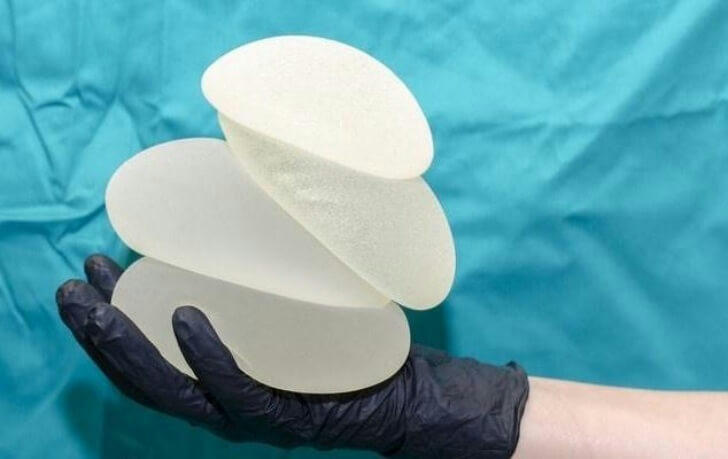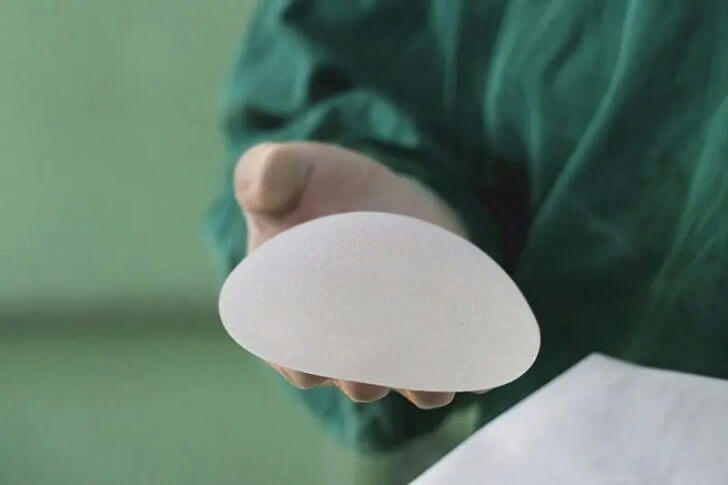How to Enhance Your Figure with Breast Augmentation Surgery
Breast augmentation, often referred to as breast implants or breast enhancement surgery, is one of the most popular and transformative cosmetic procedures performed globally. Whether it’s for aesthetic reasons, medical necessity, or to restore lost breast volume after significant life events such as pregnancy or weight loss, breast augmentation helps women achieve fuller, firmer, and more symmetrical breasts. If you’re considering this surgery, understanding the procedure, types of implants available, the risks and benefits, and learning from real-life experiences can help you make an informed decision. This article will guide you through the essential aspects of breast augmentation surgery, how to choose the right type of implant, and share real-life cases to offer insight into what you can expect from this life-changing procedure.

1. What is Breast Augmentation Surgery?
Breast augmentation is a surgical procedure designed to enhance the size, shape, and overall appearance of a woman’s breasts. Women may choose breast augmentation for a variety of reasons, including enhancing their natural breast size, restoring volume lost due to pregnancy or weight loss, or improving the symmetry of their breasts. It is also commonly performed as part of breast reconstruction following a mastectomy or other medical conditions.
The process involves placing breast implants under the breast tissue or chest muscles. These implants, made of either saline or silicone, are designed to increase breast volume and create a more youthful, balanced appearance. In addition to cosmetic reasons, the surgery can improve self-esteem and confidence by providing a more proportionate body shape.
2. Types of Breast Implants
There are several types of breast implants, each with unique characteristics, pros, and cons. Choosing the right implant depends on your body type, aesthetic goals, and personal preferences. Below are the most common types of breast implants:
Silicone Implants
Silicone breast implants are the most popular choice for women seeking a natural look and feel. These implants are filled with a cohesive silicone gel that mimics the texture of natural breast tissue. Modern silicone implants are designed to be durable and resistant to rupture, providing long-lasting results.
The main advantage of silicone implants is their soft, natural feel. They are particularly suitable for women with thinner skin or less natural breast tissue, as they provide a smooth, realistic appearance. Silicone implants come in a variety of shapes, including round and teardrop (anatomical), offering greater flexibility to achieve the desired aesthetic.
While silicone implants are considered safe, they do require more monitoring. If a silicone implant ruptures, it is not immediately obvious since the gel remains contained within the implant shell. For this reason, regular check-ups, such as MRI scans, are recommended to ensure the implants remain intact.
Saline Implants
Saline implants are filled with sterile saltwater and are usually inserted empty, with the saline solution added once the implant is in place. One of the benefits of saline implants is that they can be adjusted during surgery to achieve the desired size and shape. Saline implants are typically less expensive than silicone implants and may offer a better option for women on a budget.
However, saline implants can feel firmer than silicone implants and may be more prone to visible rippling or wrinkling, especially for women with thinner skin. If a saline implant ruptures, the saline solution is absorbed by the body, and the implant deflates, which makes it easier to detect. While the risks are lower compared to silicone implants, some women find saline implants less comfortable and natural-feeling.
Gummy Bear Implants (Form-Stable Implants)
Gummy bear implants are a type of silicone implant filled with a highly cohesive silicone gel. The key advantage of these implants is their form-stability, which means the implant retains its shape even if it is ruptured. Unlike traditional silicone implants, the gel inside gummy bear implants is thicker and more cohesive, providing a firmer, more defined shape.
These implants are ideal for women looking for a more natural teardrop shape that mimics the contours of the natural breast. They are also less likely to ripple or wrinkle due to their cohesive gel structure. However, gummy bear implants tend to be more expensive and may require larger incisions due to their firmer consistency.
Fat Transfer Breast Augmentation
Fat transfer breast augmentation is an alternative method to traditional implants. In this procedure, fat is liposuctioned from other areas of the body, such as the abdomen, thighs, or flanks, and then injected into the breasts. This technique is especially suitable for women who desire a subtle increase in breast size without the use of foreign materials.
The main advantage of fat transfer is that it provides a completely natural look and feel, as the material used is your own body fat. There is also no risk of implant-related complications like rupture or capsular contracture. However, fat transfer typically offers a smaller increase in breast size compared to implants, and not all of the transferred fat may survive the procedure, meaning that some of the volume may dissipate over time.
While fat transfer is ideal for women looking for subtle breast enhancement or those who don’t want implants, it may require multiple sessions to achieve the desired volume, and the results are not as dramatic as with traditional implants.
3. How to Choose the Right Breast Implant for You?
Choosing the right type of breast implant is a personal decision that depends on several factors. Below are some key considerations that can guide you in selecting the best implant for your needs:
Desired Size and Shape
One of the first decisions to make is the size of the implants. The desired size should be based on your personal preferences and body type. Implants come in different sizes, from subtle increases to more dramatic enhancements. It’s essential to choose a size that is proportionate to your body, ensuring that the result looks natural and balanced.
If you are unsure of the size you want, most plastic surgeons offer 3D simulation technology, which allows you to visualize how different implant sizes will look on your body. You can also try on implant sizers in the surgeon's office to get a better sense of the volume you want.
The shape of the implant is another important consideration. Round implants typically offer a fuller appearance and more upper breast volume, while teardrop (anatomical) implants provide a more natural, sloped look that resembles the natural shape of the breast.
Body Type and Skin Elasticity
Your body type, breast tissue, and skin elasticity will influence which type of implant is best suited to you. Women with smaller frames or less natural breast tissue may benefit from silicone or gummy bear implants, as these provide a more natural feel and appearance.
Fat transfer may also be an option for those with good skin elasticity who only desire a modest enhancement. If you have thinner skin or want to avoid visible rippling, silicone implants may be the best choice as they are less prone to wrinkling than saline implants.
Budget and Longevity
The cost of breast augmentation can vary greatly depending on the type of implant you choose, the surgeon's expertise, and the location of the surgery. Silicone and gummy bear implants tend to be more expensive than saline implants, and fat transfer procedures are often priced higher due to the added liposuction component.
While breast implants are designed to last for many years, they are not lifetime devices. Most implants last between 10 to 15 years, after which they may need to be replaced or removed. Regular monitoring of implants, especially silicone ones, is essential to ensure they remain intact.
Recovery and Maintenance
Different implant types and procedures come with varying recovery timelines. Fat transfer breast augmentation generally involves less downtime compared to traditional implants, but it may require multiple sessions for optimal results. For traditional implants, expect some swelling, bruising, and discomfort in the first few days, with full recovery taking several weeks.
It is crucial to follow your surgeon’s post-operative instructions closely to ensure proper healing and minimize complications. Additionally, it’s important to note that breast implants may require replacement over time due to factors like capsular contracture (scar tissue formation around the implant), implant rupture, or aesthetic concerns.

4. The Breast Augmentation Procedure
Consultation and Pre-Surgery Planning
Before undergoing breast augmentation, you will have a thorough consultation with a board-certified plastic surgeon. During this meeting, the surgeon will evaluate your overall health, assess your breast anatomy, and discuss your aesthetic goals. This is also an opportunity for you to ask questions about the procedure, risks, and expected outcomes.
Your surgeon will take measurements of your chest, including the width of your breast base and the distance between your breasts, to determine the ideal size and placement for your implants. You will also discuss incision placement options, anesthesia, and recovery expectations.
The Surgery
Breast augmentation surgery typically takes between 1 to 2 hours and is performed under general anesthesia. The surgeon will make one of the following types of incisions:
Inframammary (under the breast): This incision is made in the natural crease beneath the breast, which is often the most preferred method for its discreetness and ability to provide optimal access for implant placement.
Periareolar (around the nipple): This incision is made along the edge of the areola, which helps conceal scars. However, this technique may not be ideal for women with smaller areolas or those seeking significant volume increases.
Transaxillary (in the armpit): The incision is made in the armpit, which leaves no visible scarring on the breast itself. However, this method may not be suitable for larger implants and may not offer as precise control over placement as inframammary or periareolar incisions.
Once the incision is made, the surgeon will create a pocket either above or below the chest muscle (subglandular or submuscular placement), depending on the chosen implant type and your body anatomy. The implant is inserted into the pocket, and the incision is closed with sutures.
Recovery and Aftercare
After surgery, patients typically experience some swelling, bruising, and mild discomfort, which can be managed with prescribed medications. Most patients can return to work within a week, but strenuous activities and exercise should be avoided for at least 4 to 6 weeks to allow for proper healing.
Follow-up appointments will be necessary to monitor the healing process, and your surgeon will provide specific aftercare instructions, including how to manage any scarring and ensure proper implant position.
5. Real-Life Cases: Three Women’s Experiences with Breast Augmentation
Case 1: Emily’s Silicone Implant Journey (USA)
Emily, a 29-year-old woman from Los Angeles, had always been self-conscious about her small breast size. After years of research and consultations, she chose silicone implants to achieve a fuller, more proportional look. She opted for a moderate increase in size to enhance her silhouette without making her breasts look too large.
The surgery went smoothly, and Emily was amazed by how natural her breasts looked post-surgery. After a few months of recovery, she felt more confident and happy with her appearance. She could wear the clothes she had always wanted to wear, and her self-esteem soared.
Case 2: Olivia’s Gummy Bear Implant Experience (UK)
Olivia, a 35-year-old woman from London, struggled with the effects of significant weight loss, leaving her with sagging, deflated breasts. After considering various options, she decided on gummy bear implants, which offered a more natural and youthful appearance. The teardrop-shaped implants were placed under her chest muscles to ensure a firm, natural feel.
Olivia’s recovery was quicker than expected, and within six months, she had regained her pre-pregnancy confidence. She loved the results, as her breasts looked natural, full, and balanced with her body.
Case 3: Mia’s Fat Transfer Breast Augmentation (Australia)
Mia, a 40-year-old woman from Sydney, wanted to enhance her breasts subtly without using artificial implants. She chose fat transfer breast augmentation, where fat was liposuctioned from her thighs and transferred to her breasts. Mia was thrilled with the results, as the procedure provided a natural, soft look with minimal recovery time.
Although the volume increase wasn’t dramatic, Mia was delighted with the subtle enhancement, and she loved that the procedure used her own body fat rather than foreign implants.

6. Conclusion
Breast augmentation surgery is a reliable and effective method for enhancing the size and appearance of the breasts. With various options available, including silicone, saline, gummy bear implants, and fat transfer, you can choose the one that aligns with your aesthetic goals, body type, and budget. Whether you’re seeking a subtle enhancement or a dramatic transformation, breast augmentation can significantly improve your appearance and boost your self-confidence. The key to a successful outcome is selecting an experienced, board-certified plastic surgeon who can guide you through the process and help you achieve the results you desire.
